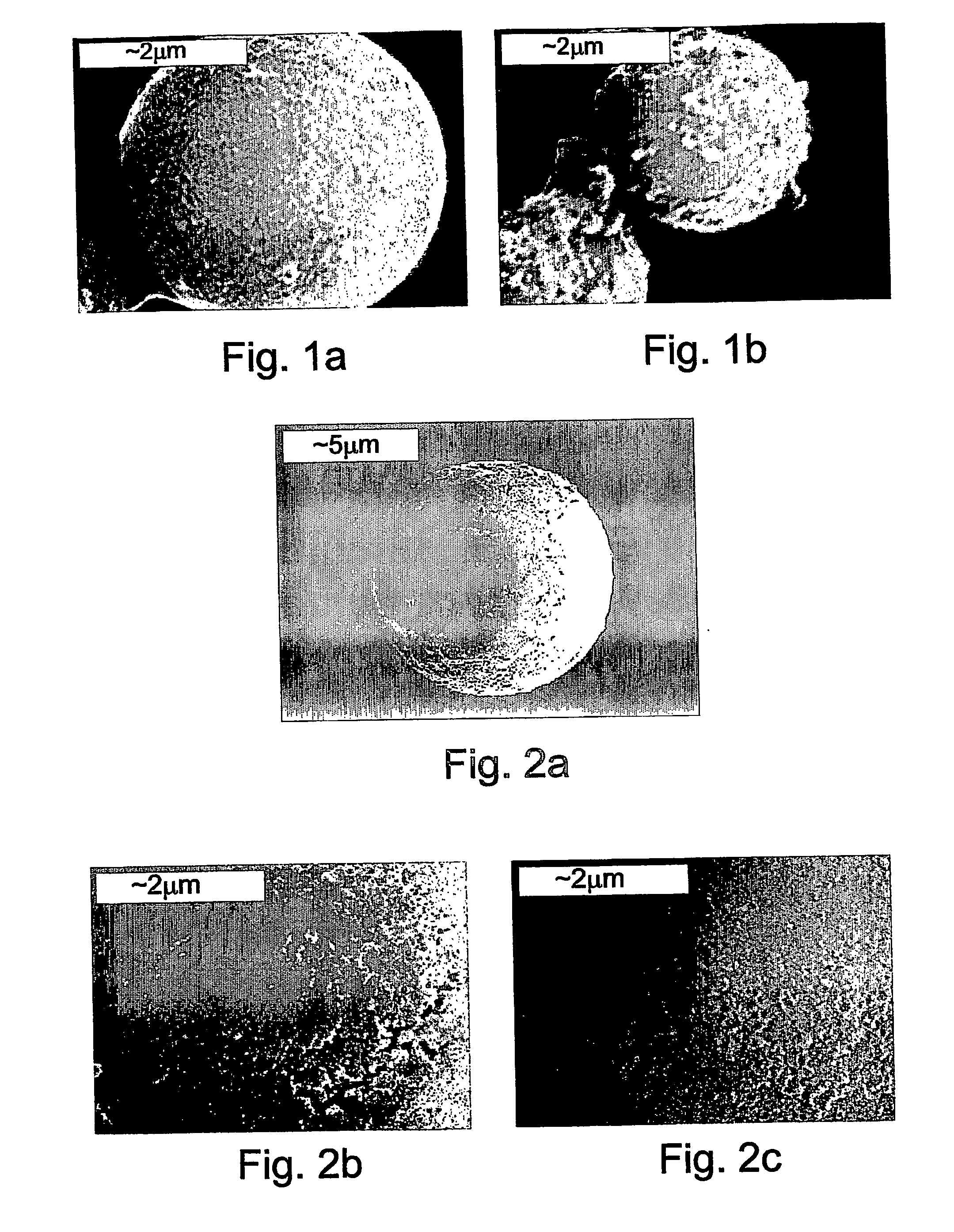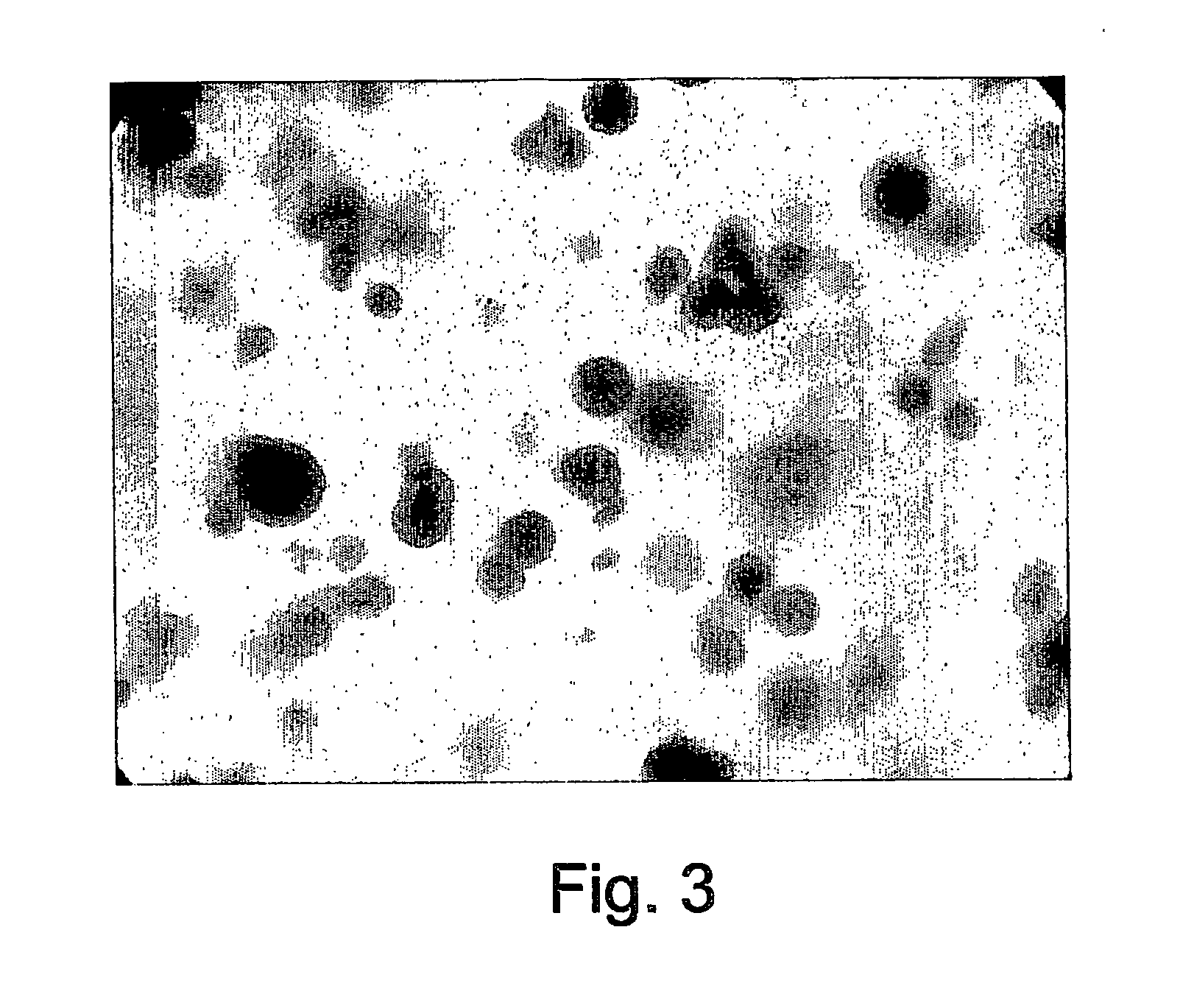Agent-encapsulating micro-and nanoparticles, methods for preparation of same and products containing same
a technology of nanoparticles and agents, applied in the field of substantially non-leachable solgel particles, can solve the problems of color migration to the surrounding medium, severe limitations in use, and inability to prevent color migration, etc., and achieve the effect of stable color migration and/or leaching
- Summary
- Abstract
- Description
- Claims
- Application Information
AI Technical Summary
Benefits of technology
Problems solved by technology
Method used
Image
Examples
example 1
Preparation of Colored Silica Microparticles
[0178] The water-soluble dye FD&C Blue No. 1 (0.002-0.2 gram) and Polysorbate 80 (0.01-1 gram) were dissolved in a solution of 30-70% acetic acid in water (10-40 grams). 10-40 grams tetraethyl orthosilicate (TEOS) were then added and the obtained solution was stirred at room temperature. The solution was emulsified in a stirred, cooled oil phase containing 5-15 grams Sorbitan Oleate and 100-300 grams castor oil. The obtained emulsion was poured into 100-800 grams decanol and the obtained mixture was stirred using a mechanical stirrer. A fine particulate powder was thus obtained and was collected by sedimentation in a centrifuge. The precipitate was washed consecutively with hexane, ethanol and hexane, and was dried in an oven.
example 2
Preparation of Coated Colored Silica Microparticles
[0179] 1-10 grams of the dry powder obtained in Example 1 were suspended in 40 grams TEOS and the mixture was stirred at room temperature. 0.01-SN HCl (50-500 μl) was then added to the stirred dispersion. The obtained powder was separated as described hereinabove (in Example 1), and the precipitate was consecutively washed with hexane, ethanol, NaOH-containing ethanol, sodium lauryl sulfate solution (SLS), water and ethanol. The obtained particles were then dried in an oven.
example 3
Qualitative Leaching Measurements of the Coated Colored Silica Particles
[0180] The coated colored silica particles obtained in Example 2 were qualitatively tested for dye migration into various organic and inorganic media, by shaking the particles in the extraction medium at room temperature and observing coloration of the media thereafter.
[0181] This extraction test was performed with the following organic media: acetone, ethanol, methanol, decanol, THF, TEOS, dichloromethane, flavor oil, isopropyl alcohol, DMSO, triethanolamine, DMF and diethyl ether,
[0182] Similarly, the extraction test was performed with the following inorganic media: water, 3% SLS, 0.1N Na OH, 1% sodium saccharin, 0.01-5N HCl, 1% sodium fluoride, 1% NaCl, 70% sorbitol, 2% urea, 30-70% acetic acid, 90% lactic acid and 0.1% citric acid.
PUM
| Property | Measurement | Unit |
|---|---|---|
| diameter | aaaaa | aaaaa |
| diameter | aaaaa | aaaaa |
| particles size | aaaaa | aaaaa |
Abstract
Description
Claims
Application Information
 Login to View More
Login to View More - R&D
- Intellectual Property
- Life Sciences
- Materials
- Tech Scout
- Unparalleled Data Quality
- Higher Quality Content
- 60% Fewer Hallucinations
Browse by: Latest US Patents, China's latest patents, Technical Efficacy Thesaurus, Application Domain, Technology Topic, Popular Technical Reports.
© 2025 PatSnap. All rights reserved.Legal|Privacy policy|Modern Slavery Act Transparency Statement|Sitemap|About US| Contact US: help@patsnap.com


